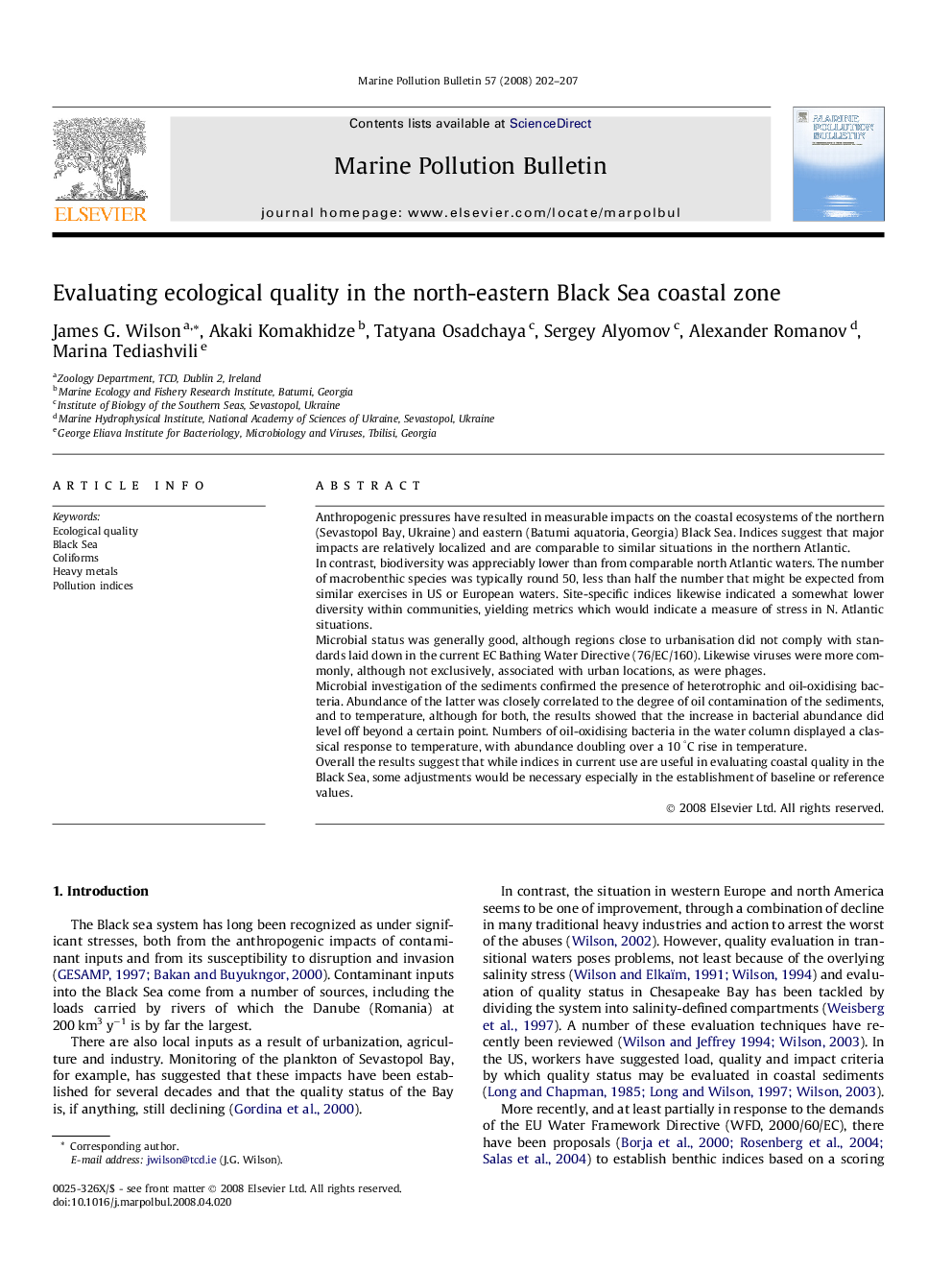| Article ID | Journal | Published Year | Pages | File Type |
|---|---|---|---|---|
| 4477257 | Marine Pollution Bulletin | 2008 | 6 Pages |
Anthropogenic pressures have resulted in measurable impacts on the coastal ecosystems of the northern (Sevastopol Bay, Ukraine) and eastern (Batumi aquatoria, Georgia) Black Sea. Indices suggest that major impacts are relatively localized and are comparable to similar situations in the northern Atlantic.In contrast, biodiversity was appreciably lower than from comparable north Atlantic waters. The number of macrobenthic species was typically round 50, less than half the number that might be expected from similar exercises in US or European waters. Site-specific indices likewise indicated a somewhat lower diversity within communities, yielding metrics which would indicate a measure of stress in N. Atlantic situations.Microbial status was generally good, although regions close to urbanisation did not comply with standards laid down in the current EC Bathing Water Directive (76/EC/160). Likewise viruses were more commonly, although not exclusively, associated with urban locations, as were phages.Microbial investigation of the sediments confirmed the presence of heterotrophic and oil-oxidising bacteria. Abundance of the latter was closely correlated to the degree of oil contamination of the sediments, and to temperature, although for both, the results showed that the increase in bacterial abundance did level off beyond a certain point. Numbers of oil-oxidising bacteria in the water column displayed a classical response to temperature, with abundance doubling over a 10 °C rise in temperature.Overall the results suggest that while indices in current use are useful in evaluating coastal quality in the Black Sea, some adjustments would be necessary especially in the establishment of baseline or reference values.
